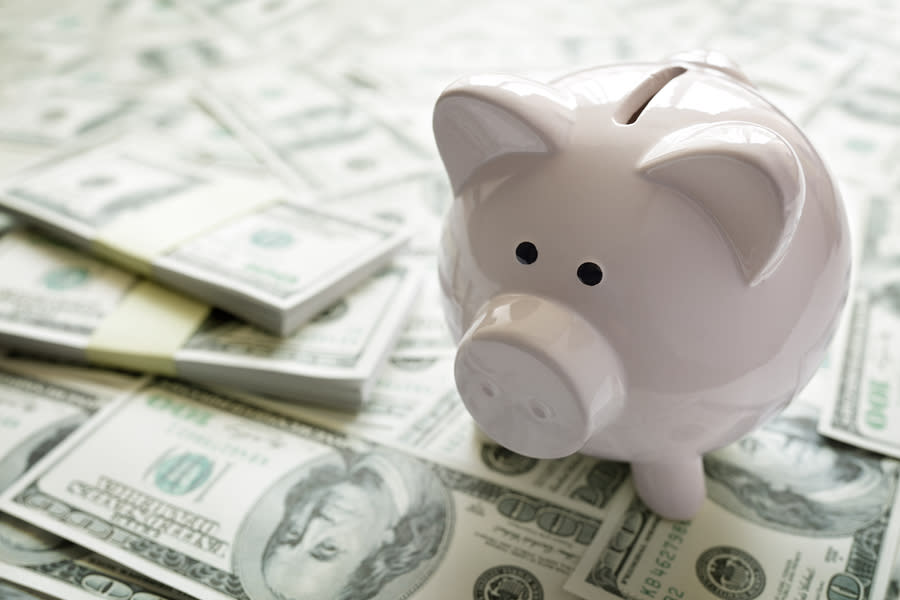Improve Your Retirement Income with These 3 Top-Ranked Dividend Stocks

Believe it or not, seniors fear running out of cash more than they fear dying.
Also, retirees who have constructed a nest egg have valid justifications to be concerned, since the traditional ways to plan for retirement may mean income can no longer cover expenses. Some retirees are now tapping their principal to make a decent living, pressed for time between decreasing investment balances and longer life expectancies.
Your parents' retirement investing plan won't cut it today.
In the past, investors going into retirement could invest in bonds and count on attractive yields to produce steady, reliable income streams to fund a predictable retirement. 10-year Treasury bond rates in the late 1990s hovered around 6.50%, whereas the current rate is much lower.
The impact of this rate decline is sizable: over 20 years, the difference in yield for a $1 million investment in 10-year Treasuries is more than $1 million.
Today's retirees are getting hit hard by reduced bond yields - and the Social Security picture isn't too rosy either. Right now and for the near future, Social Security benefits are still being paid, but it has been estimated that the Social Security funds will be depleted as soon as 2035.
Unfortunately, it looks like the two traditional sources of retirement income - bonds and Social Security - may not be able to adequately meet the needs of present and future retirees. But what if there was another option that could provide a steady, reliable source of income in retirement?
Invest in Dividend Stocks
As we see it, dividend-paying stocks from generally low-risk, top notch companies are a brilliant way to create steady and solid income streams to supplant low risk, low yielding Treasury and fixed-income alternatives.
Look for stocks that have paid steady, increasing dividends for years (or decades), and have not cut their dividends even during recessions.
One approach to recognizing appropriate stocks is to look for companies with an average dividend yield of 3% and positive average annual dividend growth. Numerous stocks hike dividends over time, counterbalancing inflation risks.
Here are three dividend-paying stocks retirees should consider for their nest egg portfolio.
Ameren (AEE) is currently shelling out a dividend of $0.63 per share, with a dividend yield of 3.12%. This compares to the Utility - Electric Power industry's yield of 3.43% and the S&P 500's yield of 1.79%. The company's annualized dividend growth in the past year was 6.78%. Check Ameren (AEE) dividend history here>>>
Autoliv, Inc. (ALV) is paying out a dividend of $0.66 per share at the moment, with a dividend yield of 3.14% compared to the Automotive - Original Equipment industry's yield of 0% and the S&P 500's yield. The annualized dividend growth of the company was 3.13% over the past year. Check Autoliv, Inc. (ALV) dividend history here>>>
Currently paying a dividend of $5.09 per share, Grupo Aeroportuario del Sureste (ASR) has a dividend yield of 4.23%. This is compared to the Transportation - Services industry's yield of 0% and the S&P 500's current yield. Annualized dividend growth for the company in the past year was 90.97%. Check Grupo Aeroportuario del Sureste (ASR) dividend history here>>>
But aren't stocks generally more risky than bonds?
The fact is that stocks, as an asset class, carry more risk than bonds. To counterbalance this, invest in superior quality dividend stocks that not only can grow over time but more significantly, can also decrease your overall portfolio volatility with respect to the broader stock market.
An upside to adding dividend stocks to your retirement portfolio: they can help lessen the effects of inflation, since many dividend-paying companies (especially blue chip stocks) generally increase their dividends over time.
Thinking about dividend-focused mutual funds or ETFs? Watch out for fees.
If you're thinking, "I want to invest in a dividend-focused ETF or mutual fund," make sure to do your homework. It's important to know that some mutual funds and specialized ETFs charge high fees, which may diminish your dividend gains or income and thwart the overall objective of this investment strategy. If you do want to invest in fund, research well to identify the best-quality dividend funds with the least charges.
Bottom Line
Regardless of whether you select high-quality, low-fee funds or stocks, looking for a steady stream of income from dividend-paying equities can potentially lead you to a solid and more peaceful retirement.
Want the latest recommendations from Zacks Investment Research? Today, you can download 7 Best Stocks for the Next 30 Days. Click to get this free report
Ameren Corporation (AEE) : Free Stock Analysis Report
Autoliv, Inc. (ALV) : Free Stock Analysis Report
Grupo Aeroportuario del Sureste, S.A. de C.V. (ASR) : Free Stock Analysis Report

 Yahoo Finance
Yahoo Finance 